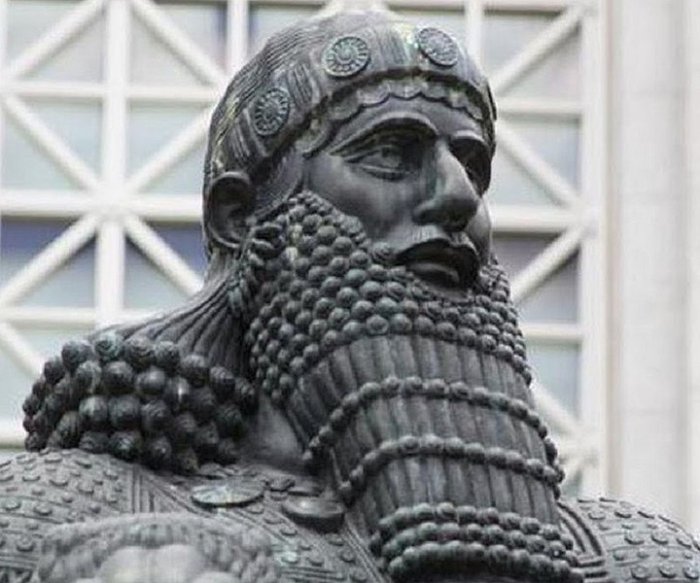Hammurabi: Great King Of Babylon And His Code Of Justice
A. Sutherland - AncientPages.com - Ancient Babylon was home to some powerful dynasties and rulers.
Hammurabi. Image credit: Windu1789 - CC BY-SA 4.0
One of them was Hammurabi, the sixth king in the Babylonian dynasty, who ruled in central Mesopotamia (modern Iraq) from 1792 to 1750 BC.
Who Was This Great King Of Babylon?
First, he proclaimed one of the earliest and most complete ancient legal codes but also contributed much more.
Hammurabi ("Hammu" means "family" in Amorite, and "rapi" means "great" in Akkadian) was one of the most significant historical figures of antiquity; he was a builder, conqueror, and lawmaker.
Ancient sources say that he built up Babylon until it was more powerful than Ur or any other city of its time and made the town the religious center.
Marduk, son of Enki, was declared Babylon's god and the greatest of all the gods, which gave him power and authority to relieve his father of his rank as chief god. Despite many protests, it happened according to Hammurabi's decision.
At the time Hammurabi ascended to the throne, Babylon was already a great state, which included, among others, Kish, Sippar, and Borsippa; however, Hammurabi recognized the authority of Shamshi-Adad I, king of Assyria and Mari, at that time. In the 30th year of his reign, he expanded his kingdom by conquering Larsa, Eshnunna, Assyria, and Mari. For the first time since the Third Dynasty of Ur, he created a powerful Babylonian Empire.
While involved in military and political advances, he also supervised his irrigation projects and the construction of fortifications and temples celebrating Babylon's patron deity, Marduk. Building spectacular pyramids, temples, and towers was difficult because there was no stone in Babylonia.
The Statue of Marduk depicted on a cylinder seal of the 9th century BC Babylonian king Marduk-zakir-shumi I. Detailed info, from Schaudig (2008). Image credit: Franz Heinrich Weißbach - Public Domain
According to Hammurabi's ingenious designs, the impressive structures of Babylon were built of bricks by molding and baking the clay, which hardened into bricks with perfect quality that has survived until today.
At its peak, Babylon, a trade and cultural center, was inhabited by about 200,000 people; at the center of this gigantic city with towers, palaces, and gardens, there was a vast ziggurat, estimated to be about 300 feet tall, according to archaeologists.
The splendid reign of Hammurabi lasted fifty−five years. After his death, great Babylon gradually declined.
The extent of the Babylonian Empire at the start and end of Hammurabi's reign, located in what today is modern-day Kuwait and Iraq. Image credit: MapMaster - CC BY-SA 4.0
Not much is left after Hammurabi's spectacular Babylon; no archives survived, and the only reliable historical documents that tell stories about Babylon are clay tablets unearthed at other locations.
Code Of Hammurabi
One of Hammurabi's most famous achievements is his law code (influenced mainly by Sumerian culture), which included many harsh punishments.
His Code, discovered in 1901, proclaimed at the end of Hammurabi's reign and supporting the doctrine of 'an eye for an eye' – is a collection of 282 laws and standards, indispensable rules for commercial interactions and punishments to meet the requirements of justice.
The black stone stele containing Hammurabi's Code was made from a single, four-ton slab of diorite, a durable but difficult to carve.
At its top is a two-and-a-half-foot relief carving of a standing Hammurabi receiving the law— symbolized by a measuring rod and tape—from the seated Shamash, the Babylonian god of justice.
Hammurabi’s Code. The prologue of the Code of Hammurabi (the 305 first inscribed squares on the stele). Some gaps in the list of benefits bestowed on cities recently annexed by Hammurabi may prove the tablet is older than the celebrated basalt stele (also in the Louvre). Image credit: Unknown artist - Louvre Museum
The rest of the seven-foot-five-inch monument is covered with columns of chiseled cuneiform script.
Hammurabi's Code was looted by later invaders and rediscovered in 1901 by a French archaeological team in present-day Iran.
The Code's 282 edicts – from family law to professional contracts and administrative law – are all written in 'if-then form. The edicts outline different standards of justice for the three classes of Babylonian society – the propertied class, freedmen, and enslaved people. A doctor's fee for curing a severe wound would be ten silver shekels for a gentleman, 5 shekels for a freedman, and two for an enslaved person.
Penalties for malpractice followed the same scheme: a doctor who killed a wealthy patient would have his hands cut off, while only financial restitution was required if the victim was enslaved.
Hammurabi's Code was not the earliest collection of laws, but his version became the most complete and famous in human history.![]()
Written by – A. Sutherland AncientPages.com Staff Writer
Updated on March 24, 2024
Copyright © AncientPages.com All rights reserved. This material may not be published, broadcast, rewritten or redistributed in whole or part without the express written permission of AncientPages.com
Expand for referencesReferences:
Goodspeed, G. S. A History of the Babylonians and Assyrians
Kriwaczek, P. Babylon: Mesopotamia and the Birth of Civilization
Charles River Editors. Babylon
More From Ancient Pages
-
 USC Archeologist Discovers Maya Royal Burial Site
Archaeology | Jan 9, 2016
USC Archeologist Discovers Maya Royal Burial Site
Archaeology | Jan 9, 2016 -
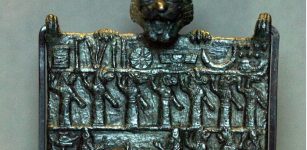 Lamashtu Plaque: Assyrian Healing Device Against The Evil Goddess
Artifacts | Mar 16, 2023
Lamashtu Plaque: Assyrian Healing Device Against The Evil Goddess
Artifacts | Mar 16, 2023 -
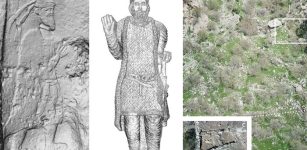 Mysterious 2,000-Year-Old Lost City Of Natounia May Have Been Found!
Archaeology | Jul 20, 2022
Mysterious 2,000-Year-Old Lost City Of Natounia May Have Been Found!
Archaeology | Jul 20, 2022 -
 Scientists Argue Over The Mysterious Void Discovered Inside The Great Pyramid Of Giza
Archaeology | Nov 8, 2017
Scientists Argue Over The Mysterious Void Discovered Inside The Great Pyramid Of Giza
Archaeology | Nov 8, 2017 -
 Ancient Societies Ruled By Ruthless Dictators – Collapsed
Civilizations | Oct 18, 2020
Ancient Societies Ruled By Ruthless Dictators – Collapsed
Civilizations | Oct 18, 2020 -
 Beehive’ Adobe Houses Of Ancient City Of Harran, Upper Mesopotamia
Civilizations | Dec 28, 2018
Beehive’ Adobe Houses Of Ancient City Of Harran, Upper Mesopotamia
Civilizations | Dec 28, 2018 -
 Domovik (Domovoi): Household Spirit In Ancient Slavic Beliefs
Featured Stories | Apr 3, 2016
Domovik (Domovoi): Household Spirit In Ancient Slavic Beliefs
Featured Stories | Apr 3, 2016 -
 Ancient Petroglyphs Of Cholpon-Ata And Mysterious Balbals Figures That Guard Grave Sites, Kyrgyzstan
Featured Stories | Aug 24, 2015
Ancient Petroglyphs Of Cholpon-Ata And Mysterious Balbals Figures That Guard Grave Sites, Kyrgyzstan
Featured Stories | Aug 24, 2015 -
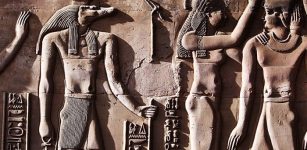 Sobek – Enigmatic Crocodile God Of Ancient Egypt
Civilizations | Sep 5, 2015
Sobek – Enigmatic Crocodile God Of Ancient Egypt
Civilizations | Sep 5, 2015 -
 Vetala – Vampire With Knowledge Of The Past, Present And Future In Hindu Mythology
Featured Stories | Jan 19, 2021
Vetala – Vampire With Knowledge Of The Past, Present And Future In Hindu Mythology
Featured Stories | Jan 19, 2021 -
 142,000-Year-Old Shell Beads Found In A Cave Are The Oldest Known Evidence Of Human Communication
Archaeology | Oct 16, 2021
142,000-Year-Old Shell Beads Found In A Cave Are The Oldest Known Evidence Of Human Communication
Archaeology | Oct 16, 2021 -
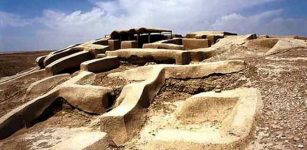 The Burnt City And Its Mysterious Prehistoric Inhabitants
Civilizations | Nov 17, 2014
The Burnt City And Its Mysterious Prehistoric Inhabitants
Civilizations | Nov 17, 2014 -
 Vimanas – Flying Machines Soaring Through Ancient Sky Of India
Featured Stories | May 27, 2014
Vimanas – Flying Machines Soaring Through Ancient Sky Of India
Featured Stories | May 27, 2014 -
 On This Day In History: Great English Dramatist And Poet William Shakespeare, Was Probably Born – On Apr 23, 1564
News | Apr 23, 2016
On This Day In History: Great English Dramatist And Poet William Shakespeare, Was Probably Born – On Apr 23, 1564
News | Apr 23, 2016 -
 Why Was The Spartan Army So Successful?
Ancient History Facts | Apr 15, 2022
Why Was The Spartan Army So Successful?
Ancient History Facts | Apr 15, 2022 -
 Ancient Footprints Offer Evidence Humans Wore Shoes 150,000 Years Ago – Scientists Say
Archaeology | Sep 11, 2023
Ancient Footprints Offer Evidence Humans Wore Shoes 150,000 Years Ago – Scientists Say
Archaeology | Sep 11, 2023 -
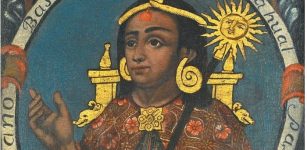 On This Day In History: Last Inca Emperor Atahualpa Captured By Francisco Pizarro – On Nov 16, 1532
News | Nov 16, 2016
On This Day In History: Last Inca Emperor Atahualpa Captured By Francisco Pizarro – On Nov 16, 1532
News | Nov 16, 2016 -
 Neanderthals Of The Mediterranean Areas Became Extinct But Not Because Of Climate
Archaeology | Jul 20, 2020
Neanderthals Of The Mediterranean Areas Became Extinct But Not Because Of Climate
Archaeology | Jul 20, 2020 -
 Ancient Wooden Spade Found Under Melting Ice In Norway – Archaeologists Urge Hikers To Stay Alert
News | Sep 16, 2024
Ancient Wooden Spade Found Under Melting Ice In Norway – Archaeologists Urge Hikers To Stay Alert
News | Sep 16, 2024 -
 Perforated Shells Were Used By Humans 120,000 Years Ago
Archaeology | Jul 10, 2020
Perforated Shells Were Used By Humans 120,000 Years Ago
Archaeology | Jul 10, 2020

